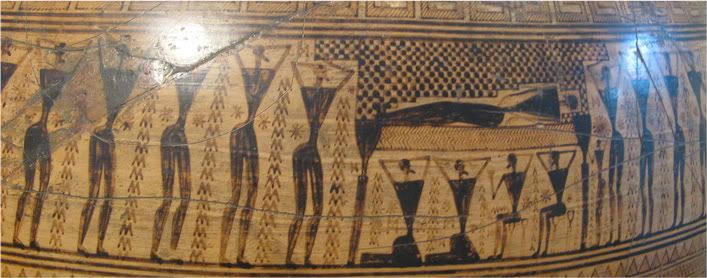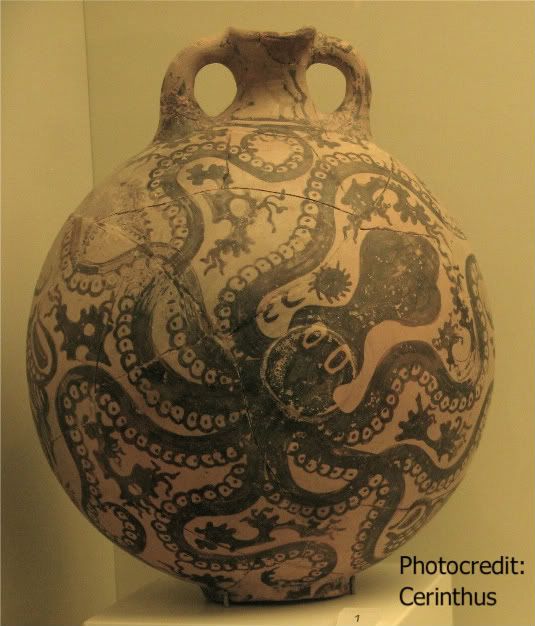 |
| Cerinthus' photo: Dipylon Vase (amphora) close-up |
- Who are the figures under the body? Are they the family of the deceased?
- Are the two that are sitting on the ground (under the body) wearing skirts, and if they are, what does this this say about the gender of the mourners who are standing around the body. Should this indicate something about the gender composition of burials or this particular burial?
- Why is one of the figures under the vase not in a typical mourning position? Who is he and what is his roll in this prothesis?
Update 10/28/10
Cerinthus mentioned to me that not only are the figures under the table different from the rest of the figures, but the figures immediately on each side of the body are gesturing slightly differently than than those behind them. These two figures are lifting the sides of a canopy. The canopy is a common trope in the Geometric prothesis, according to the U Texas website. The Grove Encyclopedia of Classical Art and Architecture refers to it as "the chequered shroud is lifted to reveal the deceased on the bier" in the article on the Dipylon Master [1]. My assumption, is that the figures closest to the body are the family of the deceased, as they often are on these types of vases. However, if anyone wants to add to this information, or discuss these possibilities for my previous questions, comment or email me.
Endnotes
- This link will only work for those of you who have access to the Grove Encyclopedia of Classical Art and Architecture or those of you who are accessing the web from a university or library that has this access.





